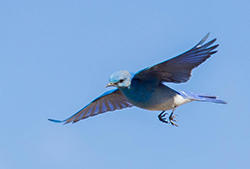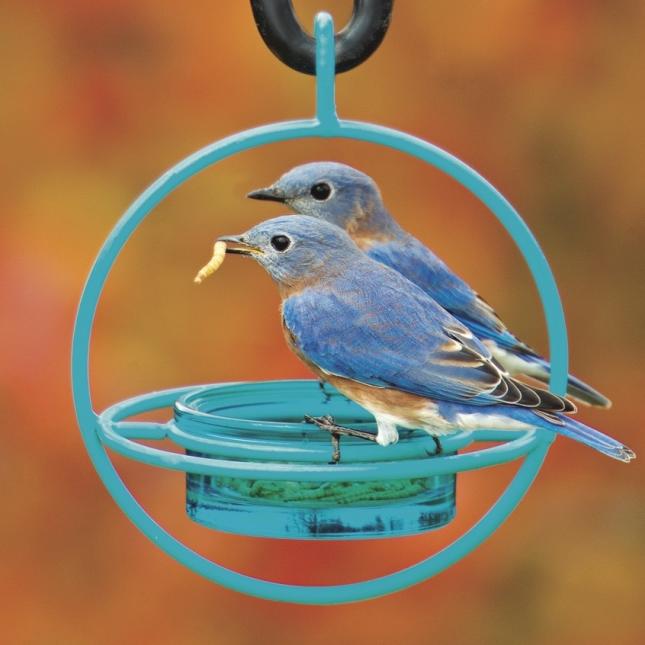
Bluebirds - Carrier of the Sky
There are three species of bluebirds found throughout North America including the Eastern, Western, and Mountain Bluebirds. And even though they share many of the same characteristics and behaviors, there are quite a few traits that differentiate the species of bluebirds. Our most common Bluebird here in San Antonio is the Eastern Bluebird.
The name “bluebird” is actually a bit misleading. Most bird colorations are due to pigments deposited in their feathers. A Northern Cardinal is red because of the red pigment called carotenoids. Crows are black because their feathers contain a dark pigment called melanin. In contrast, bluebirds do not have a single molecule of blue pigment in any of their feathers. The top transparent layer of each bluebird feather is filled with minuscule pockets of air. When sunlight strikes these pockets, all of the other visible wavelengths of light are absorbed. Only blue escapes and it is scattered in all directions for the eye to see.
During courtship, as days grow longer, male bluebirds release hormones that stimulate the area of the brain responsible for singing behavior; unpaired males can sing between 400 to 1,000 songs per hour. Bluebird adults return to the same territory every year and are generally monogamous during the breeding season.
All bluebirds are cavity nesters and will use artificial nest boxes. In fact, from the late 1800s to the 1960s, Eastern Bluebirds’ population declined almost 90% because of competition for nesting space from the imported House Sparrow and European Starling. However, since 1966 the population has increased 2.4% each year due to nesting boxes. When using natural cavities, bluebirds select abandoned woodpecker nests 75% of the time.
Bluebirds love to eat mealworms, and they consume about four grams of food per day, about 12% of their body weight. Eastern and Western Bluebirds sit on elevated perches searching for insects. When they spot one, they’ll drop to the ground and capture it with their bill, a behavior known as “drop-hunting.” In contrast, Mountain Bluebirds can hover while searching for insects. This enables them to live in areas with few trees or shrubs.
Eastern Bluebird Nesting
As early as the end of February and as late as June, the male bluebird locates a nesting site, establishes territory around it of two to five acres, and sings to attract a female and warn other male bluebirds to stay away. Once a female accepts the site, she builds a neat cup-shaped nest of dry grasses and pine needles. Nest building may take five days to three weeks.
The female lays one blue, or rarely white, egg each morning until three to six eggs are produced. The female begins incubating the eggs after the final egg is laid. Thirteen to fourteen days later, all eggs will hatch with hours of each other.
The adults begin feeding the young immediately after hatching, starting with soft insects and graduating to courser food as the nestlings grow. The adults also keep the nest clean by removing the fecal sacs that enclose the nestlings' waste. The nestlings grow very rapidly, with their eyes opening on about the eighth day. By the time the nestlings fledge (leave) the nest box 16 - 20 days after hatching, they will be nearly the size of an adult bluebird.
Usually, the entire brood of fledglings leaves the box within two hours. The fledglings can fly fifty to one hundred feet on their first flight and try to land in a bush, shrub, or low branch to avoid predators. The adults continue to care for the young and teach them to forage for food. The male bluebird will continue this job while the female begins her second or third nest. On occasion, the young from a first nesting will help feed the nestlings from their parents' second or third nesting.
After nesting season is over, bluebirds give up their territories and flock together.
From houses to feeders and food... we can help you out with all of your Bluebird nesting needs!



